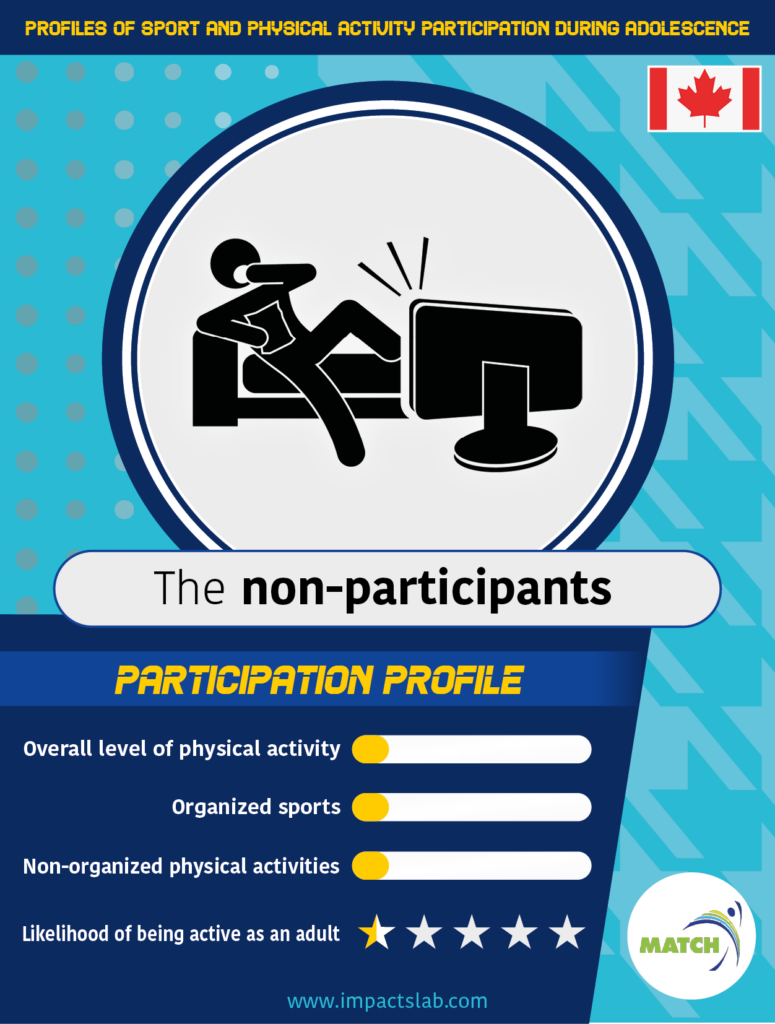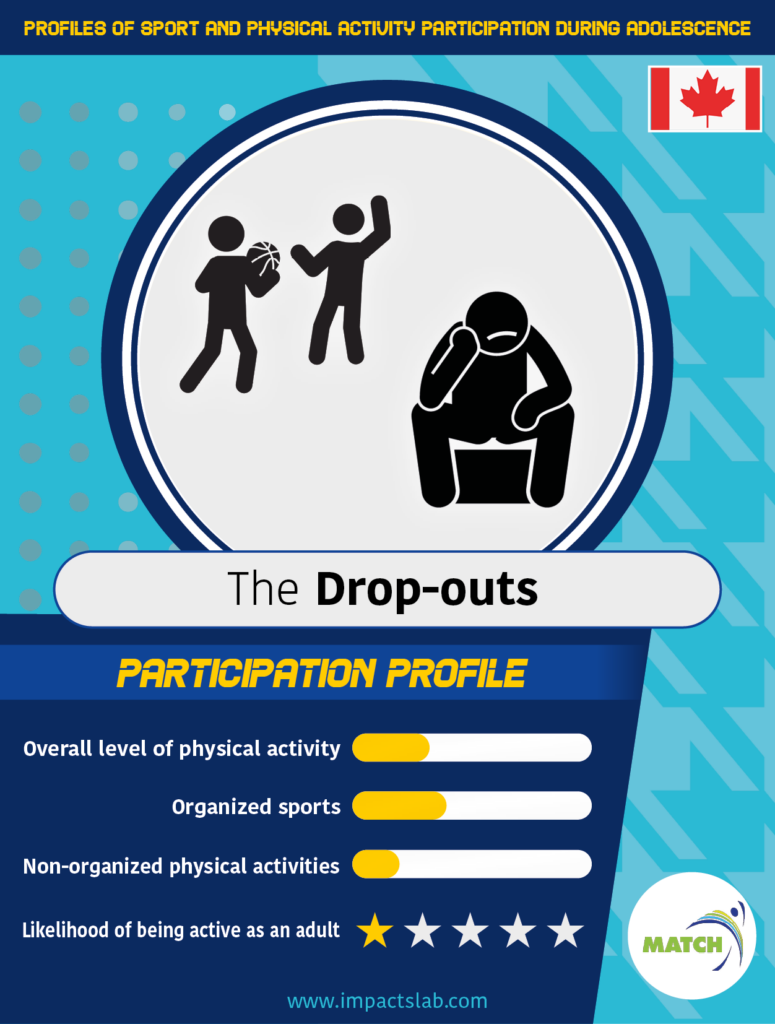Diversifying sport participation: a winning approach
February 7, 2024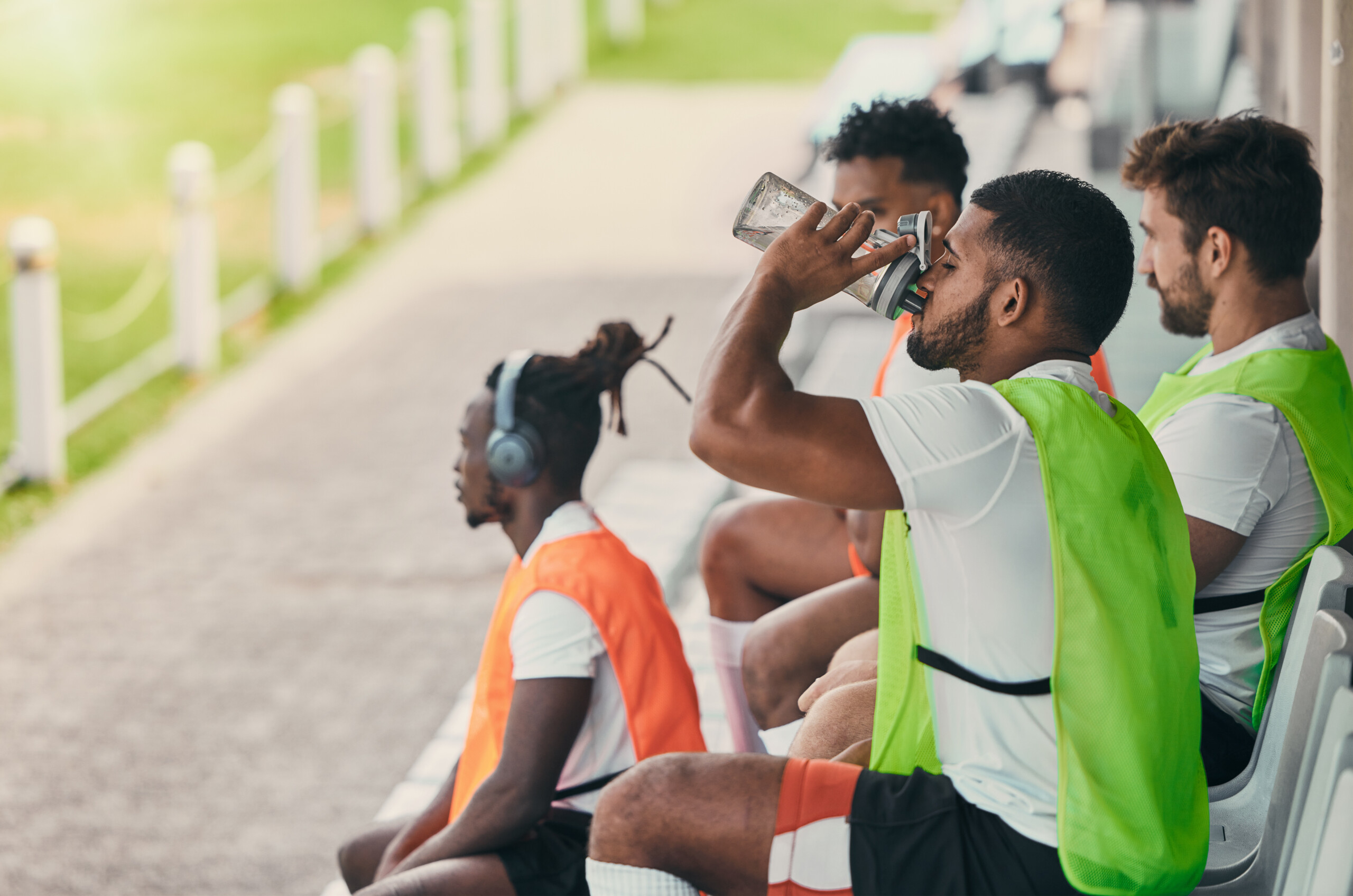
It turns out that what we thought was evidence-based… was not. You heard it loud and clear many times before; we should encourage children to engage in a large variety of sports and avoid falling into the trap of early sport specialization. It is a widespread and generally accepted idea that youth should engage in multi-sport as opposed to single-sport participation since early participation in a variety of activities is thought to be linked with a lower likelihood of future sport burnout, injury, or dropout. Many renowned Canadian sport icons, such as Wayne Gretzky, Heather Moyse and Steve Nash are named to demonstrate that early diversification of sport participation is key to future success in sports.
Although many studies conclude that multisport participation is the preferable pathway to long-term participation and performance promotion (Gallant & Bélanger, 2021), most of these studies could be categorised as providing a “very low” level of evidence to support their claim (Balshem et al., 2011). This is not to say that the commonly accepted notion advocating for multi-sport participation is wrong; simply that it lacks empirical proof to be recognized as correct. The challenge with previous studies is that they generally worked backwards, by recruiting elite athletes and asking them to recall the sports they took part in when they were younger. Results from this type of studies are difficult to generalize since study participants are not representative of the general population (e.g., elite athletes) and their responses often lack precision as they are influenced by their most recent experiences and most socially accepted ideas. A preferred study design for this type of research question would be to recruit a large and representative sample of youth and follow them over many years to observe how their sport participation changes over many years.
How we developed evidence
In 2011, we launched the Monitoring Activities of Teenagers to Comprehend their Habits (MATCH) study to develop a better understanding of how and why sport and physical activity participation changes throughout adolescence. We recruited 929 children between the ages of 10 and 12 and surveyed them 3 times per year for 8 years, until they completed high school. As they entered adulthood, we resurveyed these same participants once per year. The MATCH study now has 27 cycles of data which helps us build evidence on how different sport participation profiles develop during adolescence and how they influence future sport participation, general physical activity levels, mental health, and many other outcomes.
With data on physical activity levels, types of sports participated, frequency of participation, with whom participation took place and whether it occurred in an organized context or not, we ran a variety of analyses to identify what characterizes the most common profiles of sport and physical activity participation during adolescence and how these profiles relate to future outcomes.
What the evidence says
Analysis of MATCH data highlight that adolescents fall in 1 of 5 general profiles of sport and physical activity participation (Bélanger, 2023):
1. non-participants (those who consistently display low or no participation in sports and physical activity).
2. drop-outs (those who enter adolescence as somewhat active, but drop out of sports and physical activity rapidly).
3. active through organized sports (those who remain active throughout adolescence due to their engagement in organized sports only).
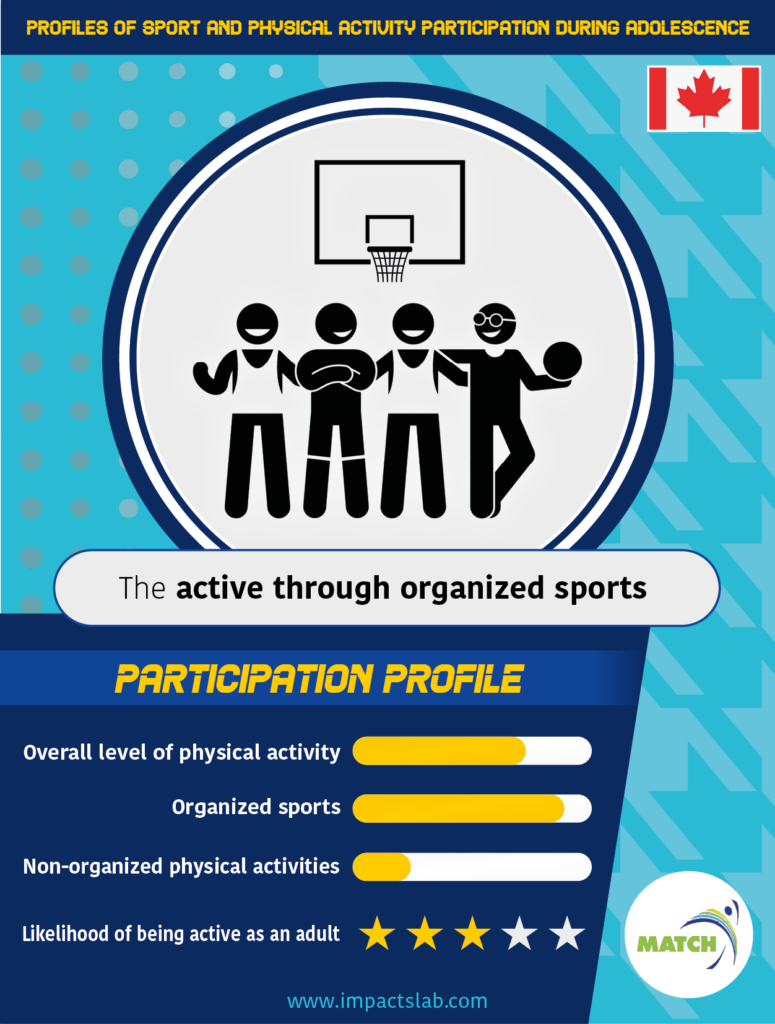
4. active through unorganized physical activity (those who remain active throughout adolescence through unorganized activities only).
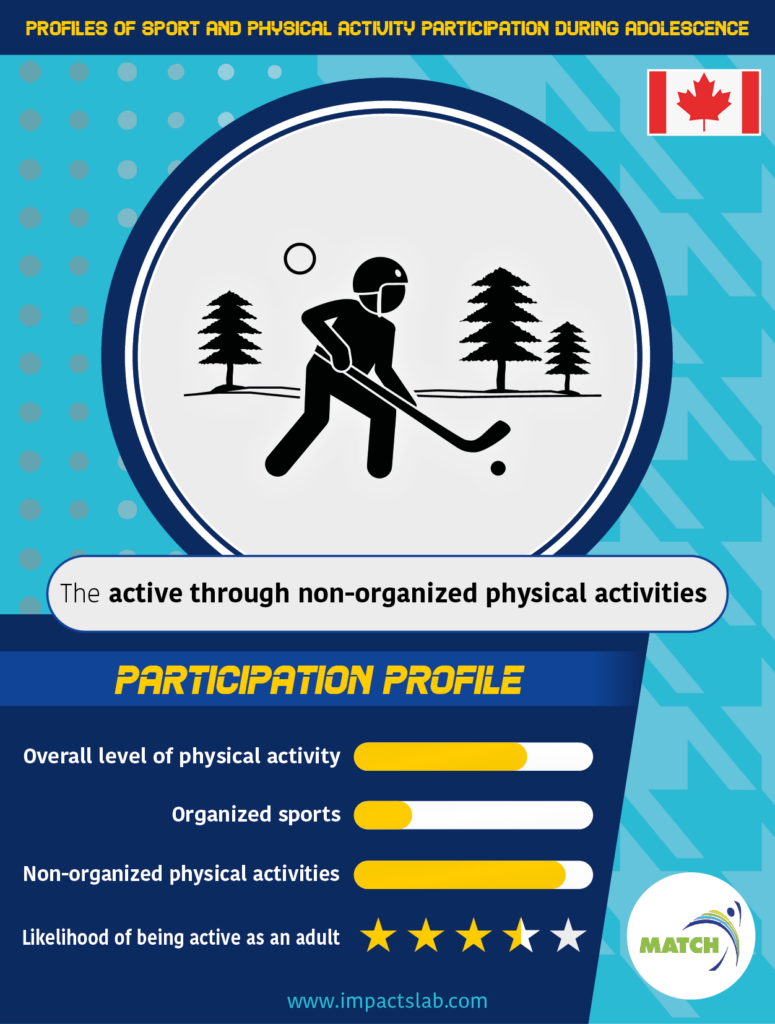
5. active through all types of activities (those who report participation in a variety of organized and unorganized sports and physical activity throughout adolescence).
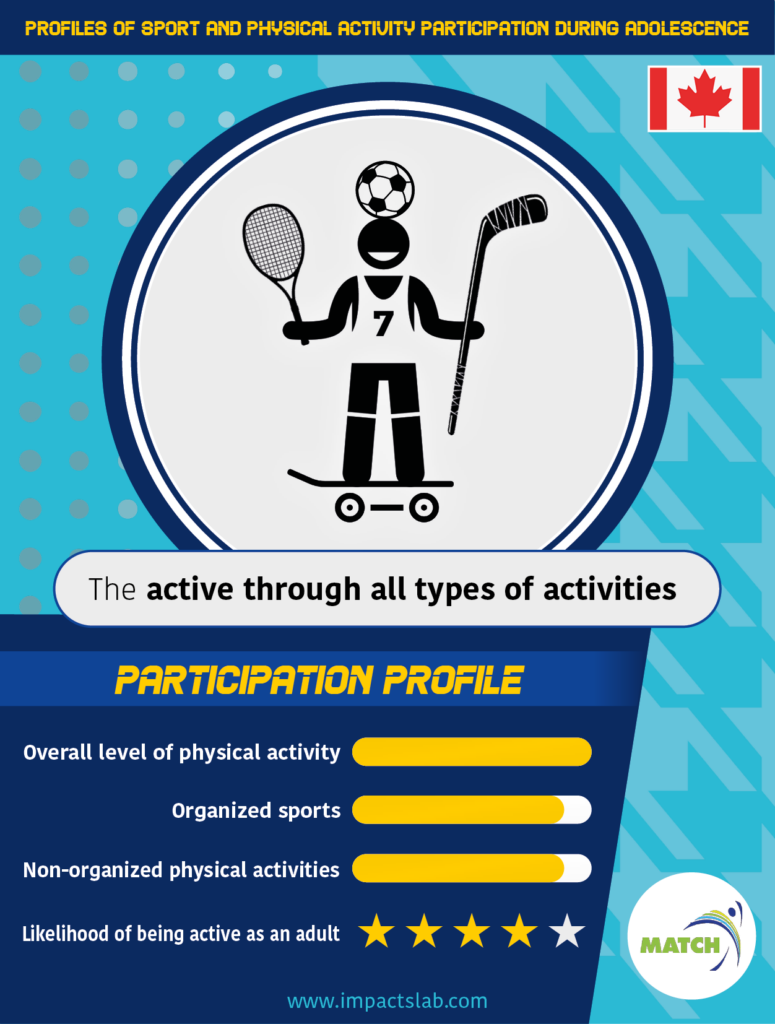 In some ways, because most of the adolescents characterized in the “active through organized sports” profile engaged in a single sport, they offer a representation of the sport specialization category that common thinking suggests we should avoid. In contrast, the “active through all types of activities” profile portrays the multisport pathway. When we compare what becomes of these participants, we noted that the multisport participants do end up among the most physically active as they enter adulthood. However, another group that appears to be just as physically active when they become adults is those who were “active through unorganized physical activity” during adolescence.
In some ways, because most of the adolescents characterized in the “active through organized sports” profile engaged in a single sport, they offer a representation of the sport specialization category that common thinking suggests we should avoid. In contrast, the “active through all types of activities” profile portrays the multisport pathway. When we compare what becomes of these participants, we noted that the multisport participants do end up among the most physically active as they enter adulthood. However, another group that appears to be just as physically active when they become adults is those who were “active through unorganized physical activity” during adolescence.
What appears to help adolescents in multisport and active through unorganized physical activity profiles be more active into adulthood is their exposure to a large variety of activities in a greater number of contexts. This variety of experiences helped these adolescents feel more capable in their capacity to be active and contributed to developing their ability to be active outside of highly structured and organized settings. This was made particularly evident during the early phases of the COVID-19 pandemic lockdown, when being physically active essentially required them to engage in unorganized activities away from sport-specific infrastructures. Examples of unorganized physical activities include, riding a bicycle, going for a hike, doing some home exercises, or playing pick-up basketball with friends.
Maintaining participation in a greater number of sports during adolescence was also linked to more positive mental health in adulthood. We found that whenever they faced a stressful life situation, many adolescents turned to unorganized physical activity as an effective way to cope with stress. Adolescents who had participated in more sports during adolescence were more likely to use physical activity as a coping strategy. In turn, more use of physical activity as a coping strategy in stressful situations related to more positive mental health.
How to apply the evidence
MATCH study results provide evidence to support the idea that multisport pathways during adolescence are preferable to engaging in a single sport specialization pathway for several future outcomes. Results highlight that it is the engagement in a variety of physical activities that appears to be key, and this can be done through unorganized physical activities as well. All in all, the message is that taking part in many different physical activities during adolescence will help promote a physically active lifestyle and more positive mental health in adulthood.
This calls for our sport system to accept the idea that it takes time to develop athletes. The nature of many sports currently nurtures a specialization approach, for example, by providing pre-season preparation sessions, longer regular seasons, elite programs, post regular season leagues, and off-season camps. While this may help some youth become more competitive at an early age in their given sport, our research program tells us that a more diversified approach will lead to better results in terms of life-long participation and positive mental health.
About the Author(s)
Mathieu Bélanger, PhD, is a full professor in the Department of Family Medicine at the Université de Sherbrooke and Researcher at the IMPACTS Lab at the Centre de formation médicale du Nouveau-Brunswick. Mathieu uses epidemiologic methods to empirically document how physical activity evolves through the lifecourse and how it impacts outcomes. He practices many sports, builds mountain bike trails, and coaches ice hockey.
François Gallant, PhD, is a postdoctoral research fellow in the Department of Family Medicine at Dalhousie University and the Vitalité Health Network. François is interested in the creative use of observational data to contribute to the evidence base. He enjoys spending time outdoors practicing many physical activities, including trail running and mountain biking.
Images created by Michaël Garcia
References
Balshem, H., Helfand, M., Schünemann, H.J., Oxman, A.D., Kunz, R., Brozek, J., Vist, G.E., Falck-Ytter, Y., Meerpohl, J., Norris, S., & Guyatt, G.H. (2011). GRADE guidelines: 3. Rating the quality of evidence. Journal of Clinical Epidemiology 64(4), 401-406. doi.org/10.1016/j.jclinepi.2010.07.015
Bélanger, M. (2023). Description of the MATCH study. IMPACTS Lab, Centre de formation médicale du Nouveau-Brunswick, Université de Sherbrooke. https://impactslab.com/en/match_study/
Gallant, F. & Bélanger, M. (2021). Empirical support for the tenets of sport participation and activity-based models: A scoping review. Frontiers in Sports and Active Living 3, article 741495. doi: 10.3389/fspor.2021.741495.
The information presented in SIRC blogs and SIRCuit articles is accurate and reliable as of the date of publication. Developments that occur after the date of publication may impact the current accuracy of the information presented in a previously published blog or article.

